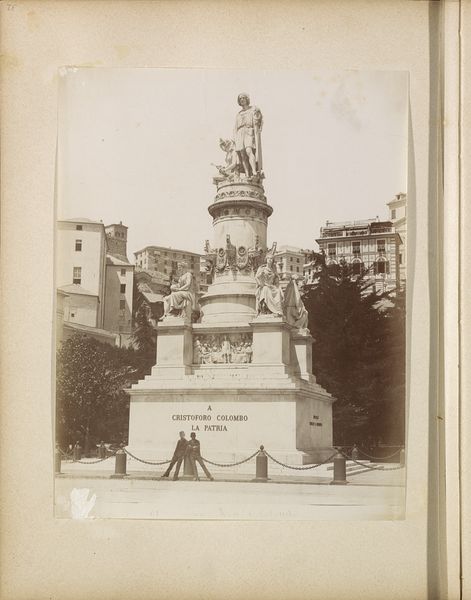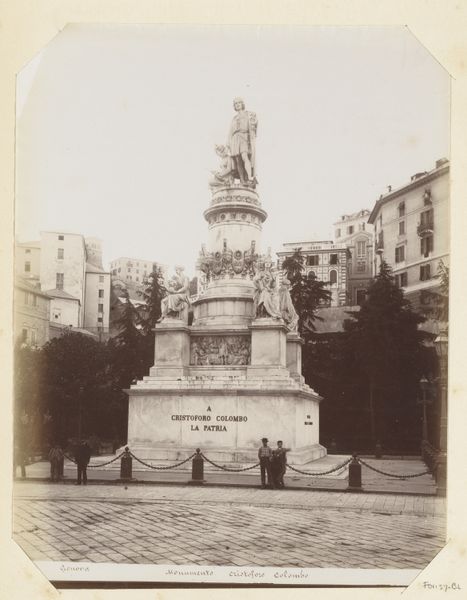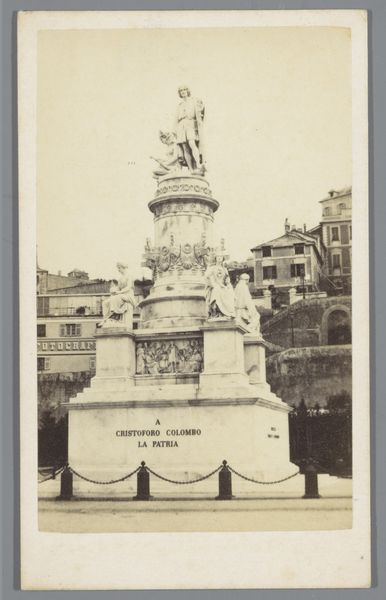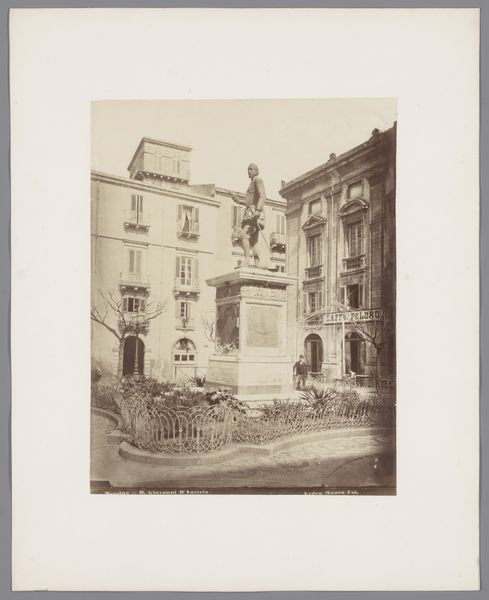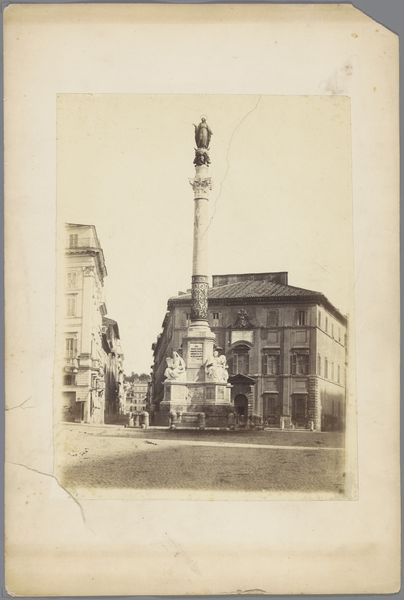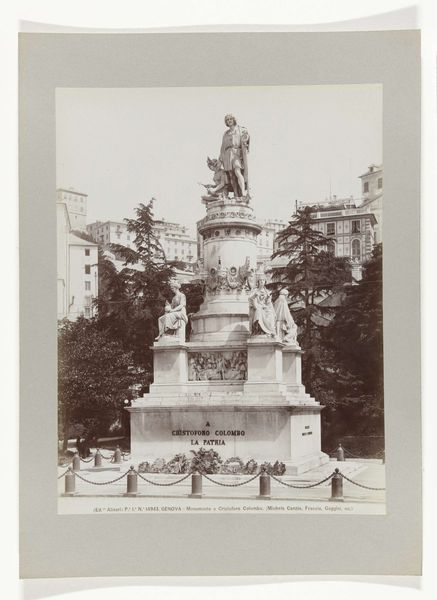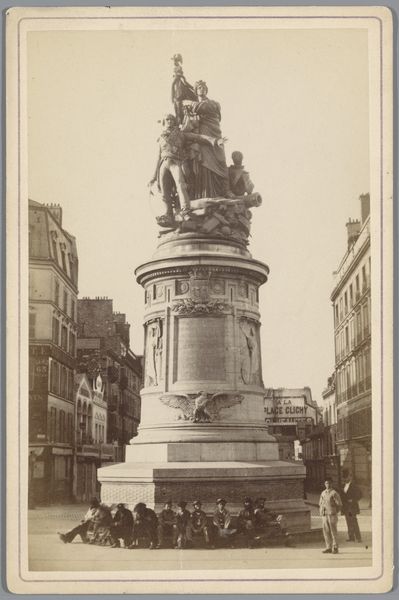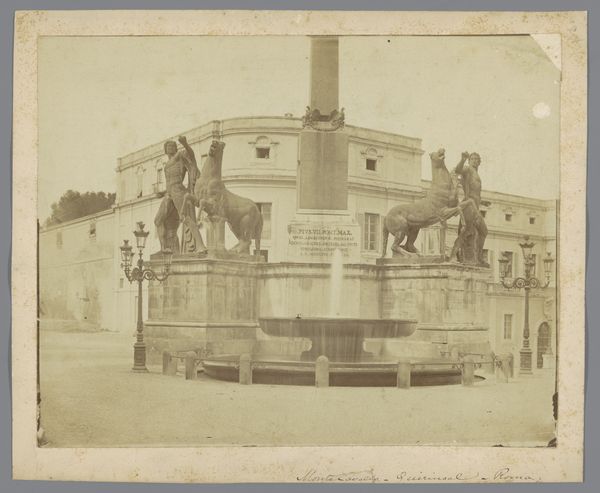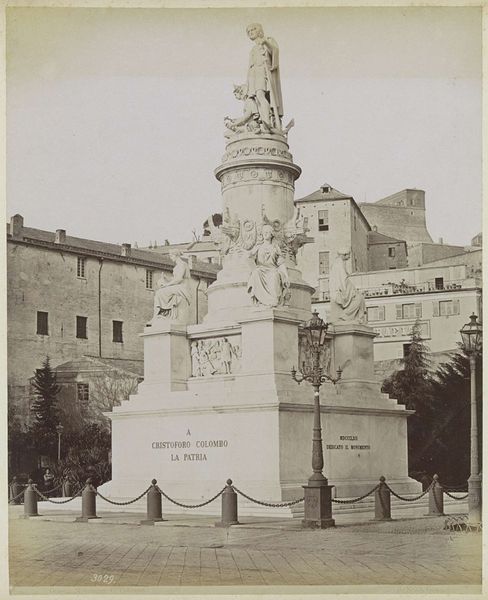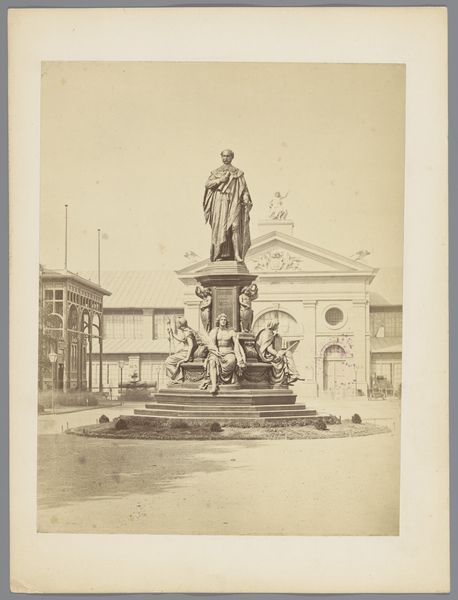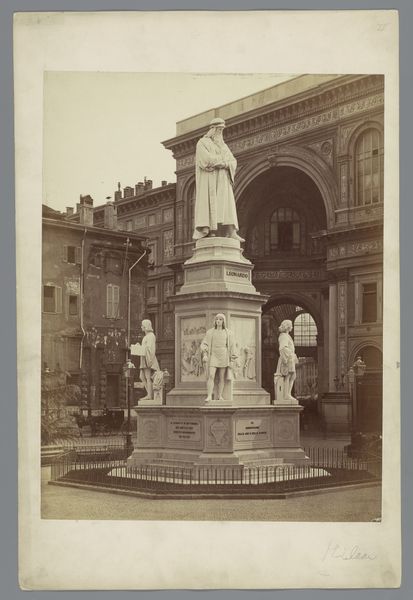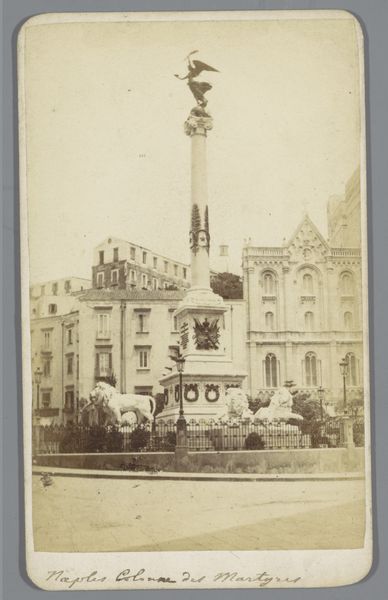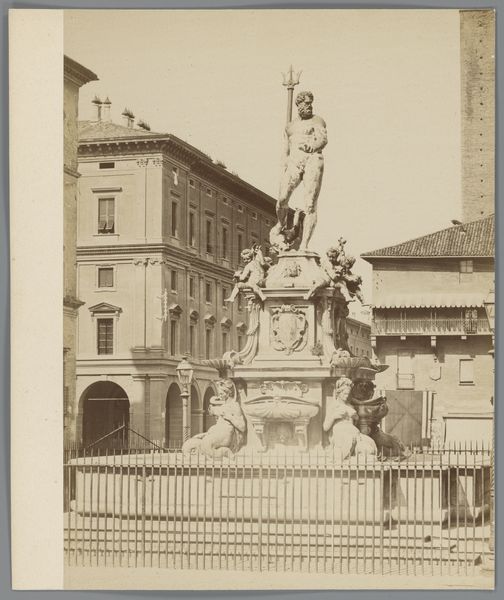
Dimensions: height 260 mm, width 207 mm, height 277 mm, width 367 mm
Copyright: Rijks Museum: Open Domain
Curator: Here we have an albumen print from around 1890 by Alfredo Noack, depicting the statue of Christopher Columbus in Genoa, his supposed birthplace. What's your immediate reaction? Editor: It's... well, monumental. It has a very official feel to it. Grand and a bit...stiff? The figures at the base almost seem dwarfed, despite their human scale. The cityscape rising in the background amplifies it all. Curator: The artist really captured a sense of grandeur and scale, didn't he? Noack’s lens meticulously renders not only Columbus atop his column but also the allegorical figures adorning it. There's a real interplay between the sculptural details and the surrounding architecture of Genoa, almost merging in tones. Editor: Exactly. All those details— the folds in Columbus's robes, the expressions on the figures, are beautifully articulated by the shadow-play. There is an emotional weight, but I cannot quite put my finger on it. Curator: Perhaps it’s the historical weight we feel looking at this figure of enormous influence now viewed with such multifaceted lenses? Think about Noack's choice of vantage point here: it presents Columbus as both a historical figure and a symbol inextricably linked to the city itself. It prompts contemplation not only of the artwork, but its ongoing significance in collective memory. Editor: It’s difficult to engage directly in contemplation given how far photography has come, the technology itself creates distance. Thinking about this image and how to decode the values within really shows me how much an image like this from 1890 could say without saying so much. Curator: Yes, and I see that Noack emphasizes a connection between material, monument, and city using only monochrome tonalities and detailed composition. Considering what photographic equipment could accomplish, it shows mastery and purpose. I find it still speaks to that Italian Renaissance idea of civic pride, through photography! Editor: Ultimately, that almost sepia quality feels less like a snapshot and more like history ossified; an intentional preservation of values, as much about civic identity as it is a portrait. Curator: And that confluence is the photograph’s real success. It prompts reflection on a past hero while inviting introspection on present values.
Comments
No comments
Be the first to comment and join the conversation on the ultimate creative platform.
